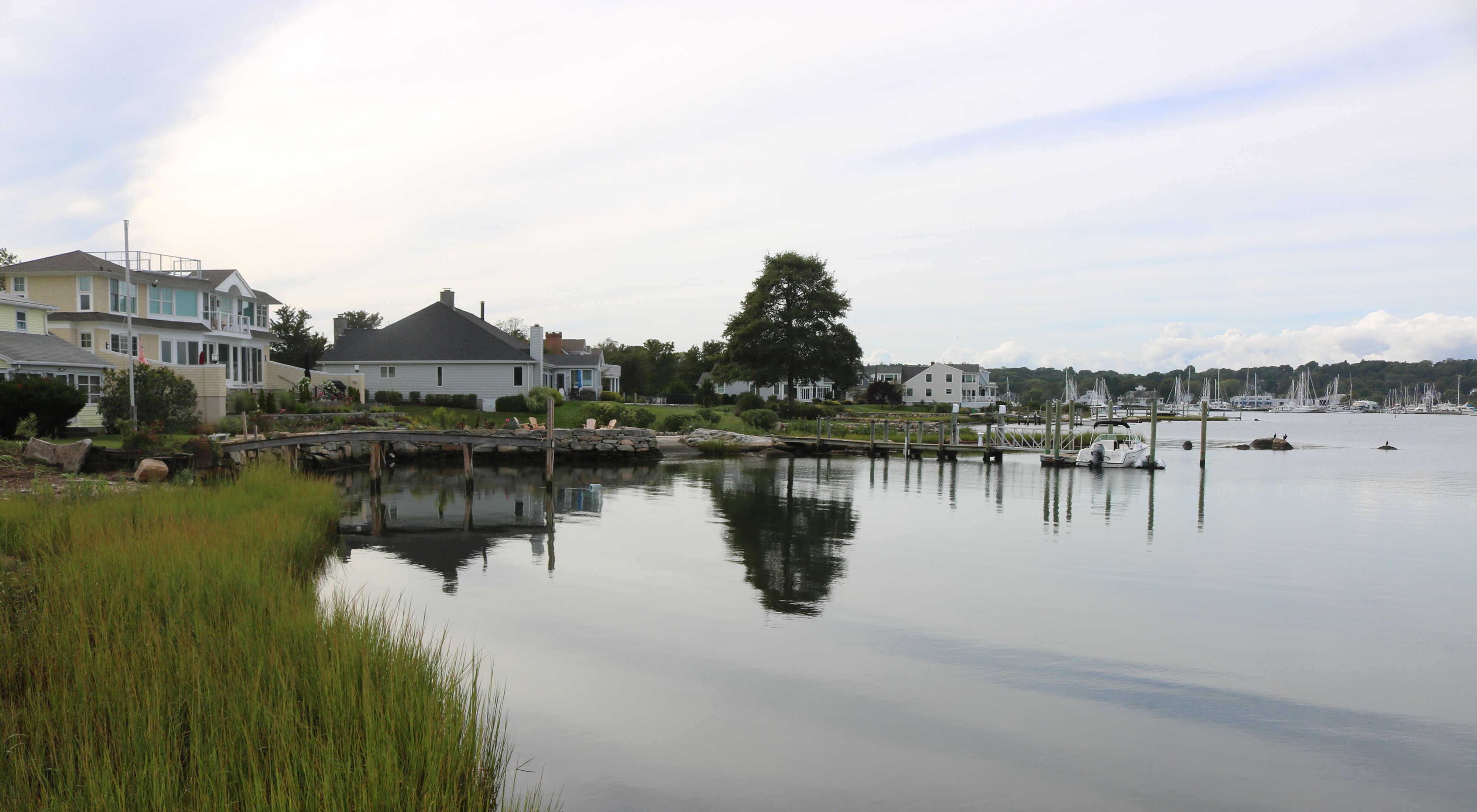Reducing Nitrogen Pollution in the Bays and Estuaries of Long Island Sound
In focus: the Saugatuck River Watershed and New London County
In addition to being a nursery for fish and other sea creatures, seagrass is an indicator species: When this marine plant can’t thrive where it once did, it may signal water quality problems, with negative consequences for people and nature.
That’s one of the reasons why, in 2014, as the Conservancy concluded a multi-year study of the causes of seagrass decline across Southern New England and New York, scientists chose the Saugatuck River watershed and Westport Harbor as one of seven focal areas for a deeper dive.
“Historically, there was seagrass in Westport harbor, but it hasn’t been seen there since the 1940s,” says Holly Drinkuth, Conservancy director of outreach and watershed programs. “We knew it had potential to survive; we wanted to know why it didn’t.”
Research identified excess nitrogen—which can lead to algae blooms that create unsafe water conditions and ultimately kill sea life—as the culprit. The surprise finding: Less than 5 percent of nitrogen pollution in the Saugatuck River watershed is from the sewage treatment plant, while the majority comes from septic systems.
“Connecticut has worked hard to reduce nitrogen coming from sewage treatment plants,” Drinkuth says. “To restore conditions that habitats like seagrass and marine life in Long Island Sound need to thrive, we must direct attention toward the other sources that leak nitrogen into our groundwater and streams.”
Recognizing that, the Conservancy’s dive into the Saugatuck watershed is going deeper: With support from Fairfield County’s Community Foundation and local partners, a team has been working with watershed residents to better understand local water quality concerns and help identify solutions.
The collaboration is making a mark. In December 2015, the U.S. Environmental Protection Agency released a new Long Island Sound nitrogen reduction strategy citing this collaboration as a model for reducing nitrogen pollution from coastal watershed sources.
The Community Foundation of Eastern Connecticut, is helping the Conservancy expand this collaborative initiative to New London County—another focal area for the follow-up to the seagrass study.
All-told: In 2016, Conservancy staff presented our seagrass research results and nitrogen pollution findings to more than 500 local community members, leaders, and elected officials around Long Island Sound.
“We’re eager to collaborate with communities,” Drinkuth says. “And we’re proud to support the EPA, and state and local agencies in Connecticut and New York to advance the science and develop strategies. Using proven solutions like upgrading and modernizing septic systems to treat nitrogen pollution and changing the way we use fertilizers will help communities sustain the clean water they depend on for their livelihoods.”
